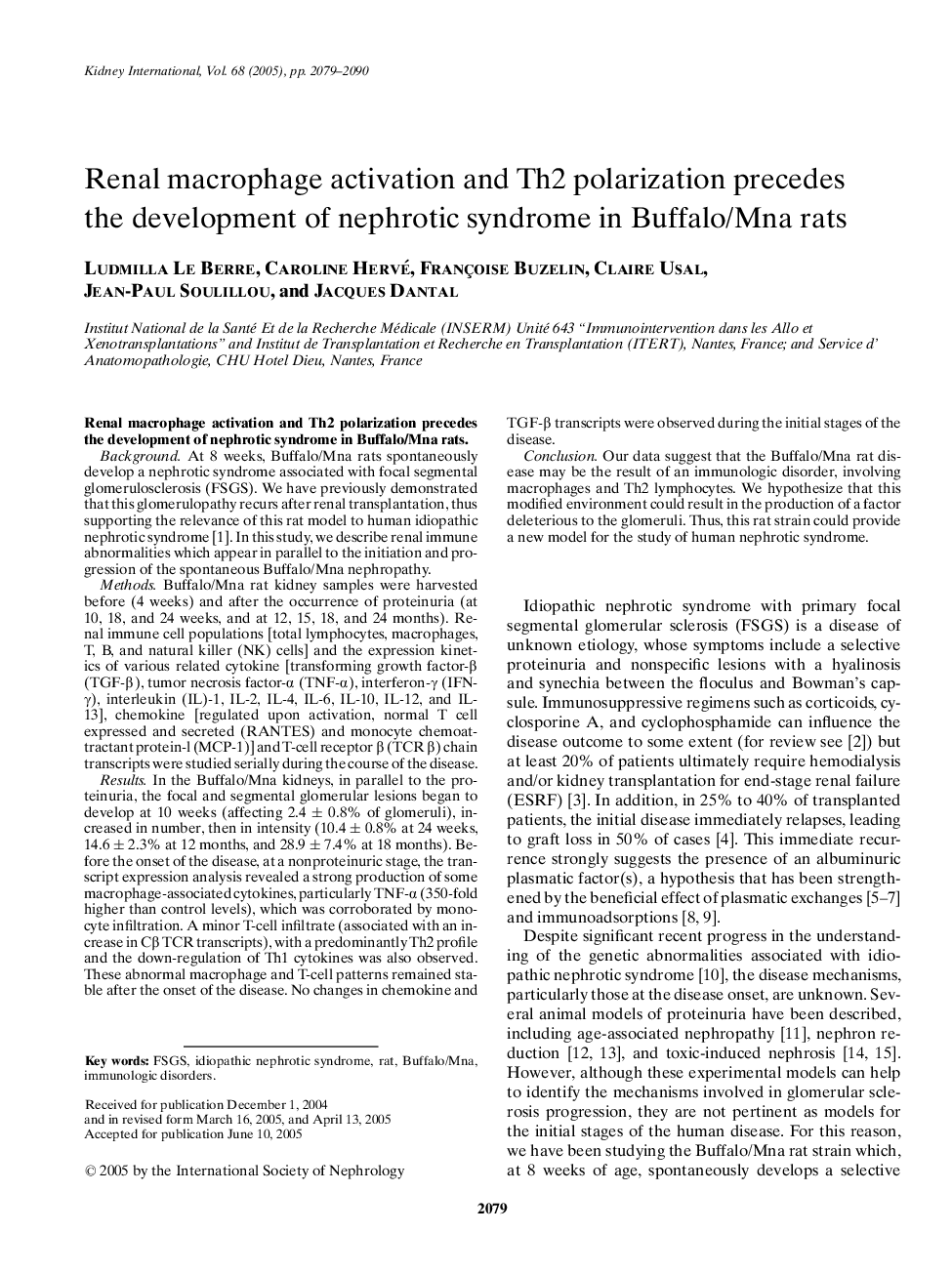| Article ID | Journal | Published Year | Pages | File Type |
|---|---|---|---|---|
| 3888233 | Kidney International | 2005 | 12 Pages |
Renal macrophage activation and Th2 polarization precedes the development of nephrotic syndrome in Buffalo/Mna rats.BackgroundAt 8 weeks, Buffalo/Mna rats spontaneously develop a nephrotic syndrome associated with focal segmental glomerulosclerosis (FSGS). We have previously demonstrated that this glomerulopathy recurs after renal transplantation, thus supporting the relevance of this rat model to human idiopathic nephrotic syndrome[1]. In this study, we describe renal immune abnormalities which appear in parallel to the initiation and progression of the spontaneous Buffalo/Mna nephropathy.MethodsBuffalo/Mna rat kidney samples were harvested before (4 weeks) and after the occurrence of proteinuria (at 10, 18, and 24 weeks, and at 12, 15, 18, and 24 months). Renal immune cell populations [total lymphocytes, macrophages, T, B, and natural killer (NK) cells] and the expression kinetics of various related cytokine [transforming growth factor-β (TGF-β), tumor necrosis factor-α (TNF-α), interferon-γ (IFN-γ), interleukin (IL)-1, IL-2, IL-4, IL-6, IL-10, IL-12, and IL-13], chemokine [regulated upon activation, normal T cell expressed and secreted (RANTES) and monocyte chemoattractant protein-l (MCP-1)] and T-cell receptor β (TCR β) chain transcripts were studied serially during the course of the disease.ResultsIn the Buffalo/Mna kidneys, in parallel to the proteinuria, the focal and segmental glomerular lesions began to develop at 10 weeks (affecting 2.4 ± 0.8% of glomeruli), increased in number, then in intensity (10.4 ± 0.8% at 24 weeks, 14.6 ± 2.3% at 12 months, and 28.9 ± 7.4% at 18 months). Before the onset of the disease, at a nonproteinuric stage, the transcript expression analysis revealed a strong production of some macrophage-associated cytokines, particularly TNF-α (350-fold higher than control levels), which was corroborated by monocyte infiltration. A minor T-cell infiltrate (associated with an increase in Cβ TCR transcripts), with a predominantly Th2 profile and the down-regulation of Th1 cytokines was also observed. These abnormal macrophage and T-cell patterns remained stable after the onset of the disease. No changes in chemokine and TGF-β transcripts were observed during the initial stages of the disease.ConclusionOur data suggest that the Buffalo/Mna rat disease may be the result of an immunologic disorder, involving macrophages and Th2 lymphocytes. We hypothesize that this modified environment could result in the production of a factor deleterious to the glomeruli. Thus, this rat strain could provide a new model for the study of human nephrotic syndrome.
